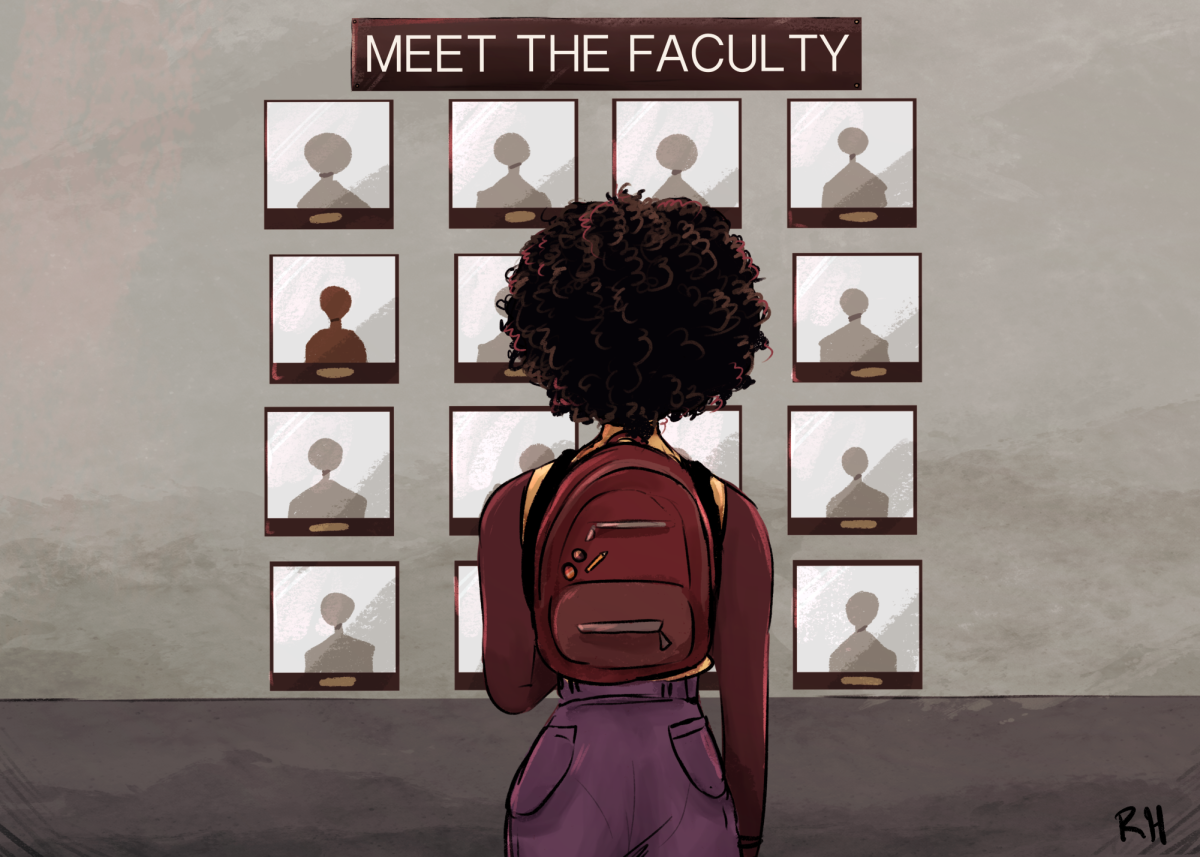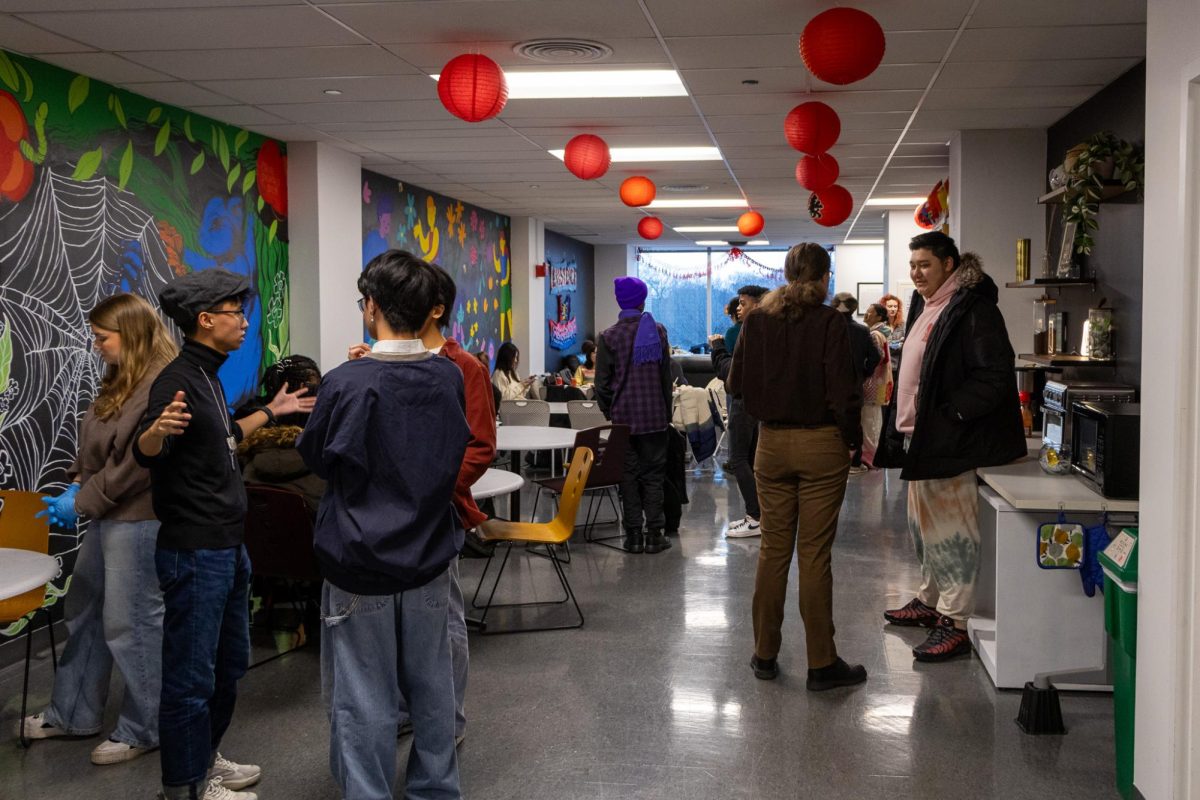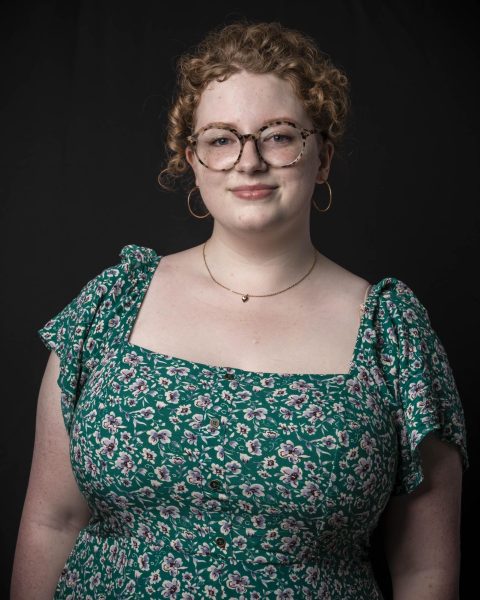Even though overall enrollment at Columbia is declining, the number of Black students has increased, from 1,005 in Fall 2021 to 1,147 in Fall 2023, according to the Office of Institutional Effectiveness, which collects data on enrollment.
Black students made up 17.6% of the student body in Fall 2023. Total enrollment in Fall 2023 was 6,529 and decreased to 5,757 this spring.
Meanwhile, only 6% of full-time faculty and 10% of part-time faculty are Black, according to the Fall 2023 Institutional Effectiveness Factbook compared to 7% of full-time faculty and 8% of part-time faculty in Fall 2021.
The college’s retention rate of faculty of color has been decreasing since 2011— especially for Black full-time professors, the Chronicle previously reported.
John Williams, associate professor of instruction and musical director of the Musical Theatre Department, said he appreciates that Columbia has more diverse students than many other institutions of higher education.
“I do see tons of diversity, not only through demographics such as skin color, but also sexual orientation and gender,” said Williams, who started at the college in September.
Williams also said that from his observations, the diversity of the faculty within the theater department “could be better” but that the department is making an effort to hire faculty of color.
“We onboarded three new people since January and they’re all diverse,” Williams said.“We’re definitely pushing for a diverse faculty because of the student body.”
The college hired three Black full-time faculty members in January just before it announced a hiring freeze and plans to restructure academic programs and eliminate tenured positions. The college had lost three Black full-time faculty members after Spring 2023, as the Chronicle previously reported.
The film and television major in the Cinema and Television Arts Department has the highest percentage of Black students at 14.6%.
Karla Fuller, an associate professor in Cinema and Television Arts, has taught at Columbia for 27 years. Fuller said she noticed an increase in the diversity of students over the years but has not seen as much of a change in faculty.
“We have not had the diversity that we should have in CTVA over the years of my tenure here,” Fuller said. “Black instructors with the exception of myself have come and gone over the course of my years here for various reasons, some their own choice and others not.”
Fuller said Black students in the CTVA department would benefit from learning from more Black faculty. “They need more Black faculty who can directly speak to the lived experience of being Black in the academy, the industry and society at large,” Fuller said.
Black Student Union President Karington Cox is a senior fine arts and graphic design major. Cox said she has only had three Black instructors during her time at Columbia.
As an artist, Cox feels like some of her instructors are not educated about the struggles of the Black community. “It’s a bit frustrating considering the work that I create is cultivated to be a positive representation of my community,” she said.
Sarah Bonds is a senior musical theater major who serves as the Theatre Senator for the Student Government Association and vice president of the Black Student Union. Bonds said that she has seen more diversity in theater faculty recently, but only had one Black theater instructor in her first two years at Columbia. “For how diverse the Chicago theater scene is, it was disappointing,” she said.
In Fall 2023, the acting major had the fourth-highest percentage of Black students out of all the college’s programs at 6.5%.
“It’s difficult, I think, in any profession to feel like you don’t have anyone who may have the same life experiences as you. Not exactly like the same life story or anything, I’m not looking for that, but just a few similarities,” Bonds said.
Bonds said she feels confident when working with Black faculty who may have a better understanding of the material she performs.
“I worry about how that gets worked on with different professors and if they’ll understand or be able to point me in the right direction and things like that. So it’s made me more confident in the program and in the coursework, knowing that I have other Black people there who can understand and who can guide me,” Bonds said.
On Feb. 5, the Hip-Hop Club hosted “The Culture: Community Town Hall Mixer.” The event consisted of a mixer, a panel discussion and performances. Hip-Hop Club President I’Ja Wright said she organized the event as a way for Black students to meet and converse with Black faculty.
“We hear all the time a lot of students don’t know what courses a lot of Black staff teaches, they just never had a Black professor or work with a Black staff member. And it’s crazy to me because a lot of my professors that influenced me a lot in my field that I’m currently in, which is marketing, were Black women,” Wright said.
Sable Ladingham, a senior computer animation major and the Student Government Association Diversity and Inclusion Advocate senator, said in her time at Columbia, she has never had a Black instructor. She said that the college needs to figure out what they can do to attract more faculty of color.
“What can Columbia offer to bring in more faculty of color, especially Black faculty? If you go to other art schools or if you go to other schools in the Chicagoland area, they might be getting a better offer there,” Landingham said. “Of course with the latest news, especially with the strike and stuff, I can see why people have been considering other places.”
Some are concerned about how the potential for layoffs and the hiring freeze will impact Black faculty in particular.
Cox said that if there are faculty cuts, she is interested in seeing how that may affect faculty of color. “Because it’s such a small amount, I’m curious to know who would be the first to go,” she said.
“We don’t want them to fire any of our professors,” Bonds said. “But just to make sure that they’re not singling one group out or that they’re not losing professors and then they’re losing the diversity of those programs. I hope they know that that will trickle down and then eventually they will lose diversity of the students in those programs.
On Feb. 28, President and CEO Kwang-Wu Kim submitted a draft Presidential Advisory Report to the Executive Committee of the Faculty Senate. The report outlines Kim’s proposed changes to the administration and academic structures that would reduce the budget by $18.8 million.
Fuller said that while she would like to see the college recruit more Black faculty and other faculty of color in her department, she is not sure that it will happen given the financial situation. “Now that the college is in a hiring freeze, it might be a while until new initiatives can be put into place,” she said.










